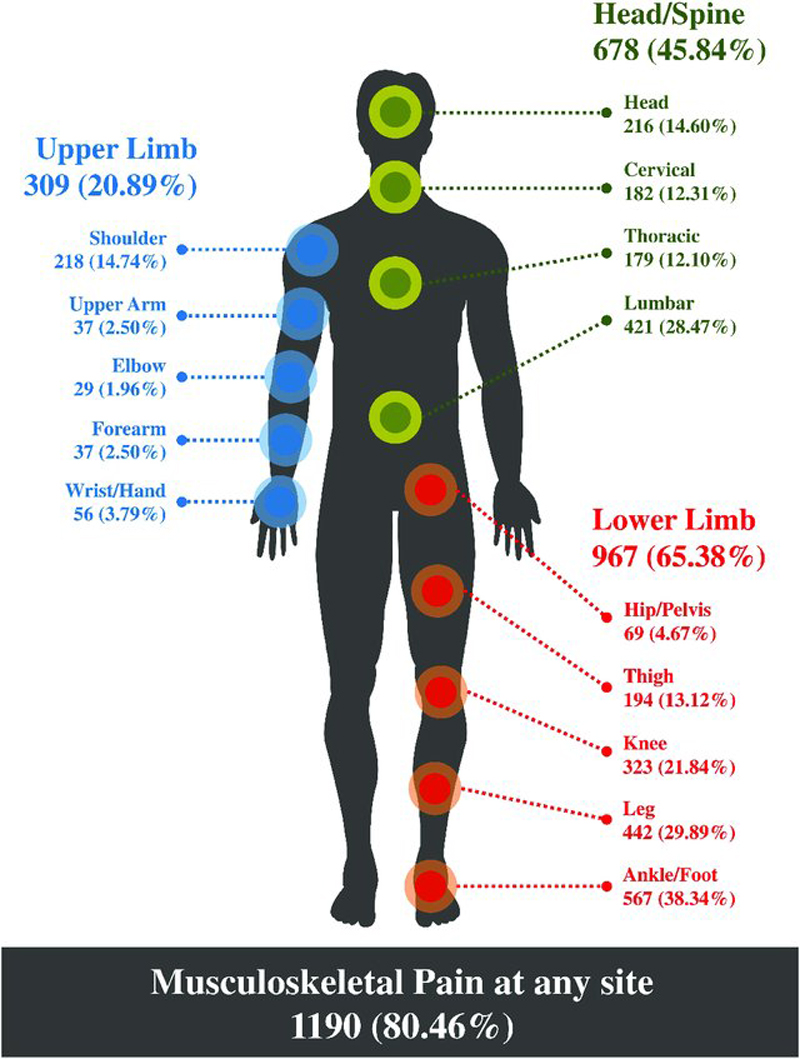Revisiting Risk-stratified Whiplash-exposed Patients 12 to 14 Years After Injury
SOURCE: Clinical Journal of Pain 2020 (Dec)
| OPEN ACCESS |
Martin K Rasmussen 1 2, Alice Kongsted 3 4, Tina Carstensen 5 6, Troels S Jensen 1 6, Helge Kasch 6 7
1 Danish Pain Research Centre Aarhus University Hospital.
2 Center for Translational Neuromedicine, Copenhagen University, Copenhagen, Denmark.
3 Department of Sports Science and Clinical Biomechanics, University of Southern Denmark.
Objective: The objective of this study was to evaluate the long-term predictive value of the Danish Whiplash Group Risk Assessment Score (DWGRAS) with 7 risk strata.
Design: E-questionnaire-based follow-up study (n=927) combining 2 cohorts of whiplash-injured patients, 1 observational (n=187) and 1 interventional randomized controlled trial (n=740).
Methods: Nine hundred twenty-seven previously healthy persons exposed to acute whiplash injury during motor vehicle collision were sent letter by postal service asking the addressee if they would respond to an E-questionnaire. Outcome measures were: whiplash-related disability, pain, use of medication/nonmedical treatment, work capacity.
Results: The response rate was 37%. Fifty-five percent reported whiplash-related disability. Fourteen percent reported daily symptoms. A strong relationship was found between risk strata and impact of event and between risk strata and disabling symptoms.
There are more articles like this @ our:
Conclusions: Internal and long-term validation of DWGRAS was performed, but a low response rate indicates that results should be interpreted with caution. Furthermore, external validation needs to be done in long-term studies. An receiver operating characteristics curve of 0.73 (95% confidence interval 0.67; 0.79) predicting daily or weekly whiplash-related disability after 12 to 14 years was found using the DWGRAS risk score.
Key Words: prospective study, whiplash injuries, headache, neck pain, work disability
The FULL TEXT Article:
It is estimated that ~50% of persons sustaining a whiplash injury will continue to report persistent symptoms and present with persistent signs. [1, 2] There is a need for better identification of the factors predicting the outcome to plan future interventional studies and to improve the treatment after whiplash injury. So far, grading systems used in whiplash injuries have not been successful. [3-5] One reason may be the complexity of an apparently mild neck injury and the multifaceted appearance of the so-called whiplash syndrome [6, 7] with a range of biological, psychological, and social factors involved. In whiplash injuries, there is a lack of information about the combined effect of biological, psychological, and social factors for long-term prognosis.
We have previously developed and validated [8, 9] a risk assessment score: The Danish Whiplash Group Risk Assessment Score (DWGRAS) and the 7 derived Risk Strata have shown a capability of predicting a 1-year pain disability and work disability. DWGRAS was reported to reflect biological factors, including a 1-year development in neck strength and endurance [10] using a control group sustaining an acute ankle injury, and to reflect changes in pain response. Neck disability, using the Copenhagen Disability Functioning Scale, [11] was correlated to the DWGRAS Score.
DWGRAS has been used to reflect differences in social performance including factors related to work, for example, predicting a 1-year work disability [8] and also the changes in daily life functioning. [12] From a psychological point of view, factors like impact of event, intrusion and avoidance related to cognitive psychological impact of the exposure to whiplash injury, are significantly different after 1 year in risk strata derived from the DWGRAS score. [8]
The Quebec Task Force Grading system is considered the gold standard for describing whiplash patients and was introduced by the Quebec Task Force in 1995, [5] but has not been helpful in predicting long-term pain and disability after whiplash injuries. [3] One reason could be an underlying biologically oriented explanation of the traumatic event.
Recently, Sterling and colleagues have developed a clinical prediction rule, which included: initial neck disability index, initial neck pain (visual analogue scale), cold pain threshold, range of neck movement, age, sex, presence of headache, and posttraumatic stress symptoms. Hyperarousal and hypervigilance have been of particular interest. [13, 14] This prediction rule is similar to the DWGRAS score. Long-term observations have not been reported, but external validation studies have been published. [13] A +15-year follow-up on whiplash injury was published by Squires and colleagues. [15, 16] The initial group was heterogeneous, not followed up from early after injury, and more severely affected in comparison to other cohorts. A Norwegian study [17, 18] reported nonpainful symptoms, depression, and anxiety in the HUNT 1 and II studies in persons, who in questionnaires claimed to be experiencing whiplash injury. However, otherwise injuries were not documented early after injury. A recent cross-sectional survey of 12,000 persons of either between 40 and 42 years of age or between 60 and 62 years of age (The 6th Tromsø Study) found chronic pain in almost one-third of the participants. Four percent related their chronic pain to whiplash injury. But, in general there is a lack of knowledge regarding the roles of biological, psychological, and social risk factors for the long-term prognosis after a whiplash injury. [17] Grading systems that are easy to use are needed early after whiplash injury. The grading system should possess a long-term predictive value and high internal and external validity.
The aim of this study was to examine the long-term capacity of the DWGRAS risk score for predicting whiplash-related disability, and painful and nonpainful symptoms and the use of medication and nonmedical treatment based on initial risk stratification.
SOURCE: Read the rest of this Full Text article now!






Leave A Comment